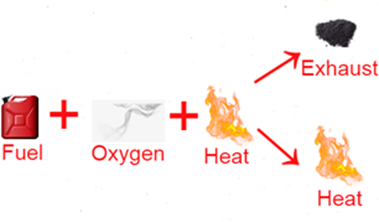The Hyperloop System
Team 8C: Hyperloop: Presentation Video https://mediaspace.carleton.ca/media/Group%208%20-%20Presentation%20of%20Findings/1_f52y8sdq
Overview
The Hyperloop is a new technology currently under development. Its purpose is to serve as a more efficient way of transporting people and goods over between cities and states in significantly less time than modern transportation, such as trains. The Hyperloop will operate at higher speeds, while also being more environmentally sustainable and efficient than modern combustion based trains. This document provides the summarized findings of each group member, regarding magnetic levitation, optimal materials for the Hyperloop tube, the vacuum environment and how the hyperloop reduces carbon emissions.
Figure 1: Placement of Magnets in the Hyperloop[1, modified]
Magnetic Levitation: Bilal Chaudhry
The Hyperloop uses magnets as a primary means of transport. In the Hyperloop, magnets enable magnetic levitation, where the train hovers above the track, as seen in Figure 2 below. In doing so, these magnets reduce the energy that is being lost in a commute, thereby increasing the energy efficiency of the Hyperloop.
Figure 2 shows the placement of magnets in the Hyperloop. In the image, solenoids are placed on the track, and permanent magnets are placed beneath the train. This arrangement of magnets is used to enable magnetic levitation [1]. This allows the train to levitate above the track which it travels on. Commonly, things like cars are limited to certain speeds and lose a lot of energy due to the friction between the wheels and road. By levitating the train above the track, friction no longer acts on the train, thereby increasing the energy efficiency of the Hyperloop significantly, as there will be no consistent loss of energy over the long distance Hyperloop’s commutes.
Figure 2: Placement of Magnets in the Hyperloop[2, modified]
References
[1] “Maglev and Hyperloop - 5 years on,” SkedGo, 11-Jun-2019. [Online]. Available: https://skedgo.com/maglev-and-hyperloop-5-years-on/. [Accessed: 26-Nov-2020].
Optimal Material For Hyperloop Tube: Kousha Motazedian
The tube must be strong and durable because it must be able to hold a vacuum environment inside to create a zero-friction experience for the train. The tube must be able to withstand any outside forces, such as strong winds, ice, and hail, reducing damage to the tube and guaranteeing the safety of passengers. The best material to be used for the construction of the hyperloop tube are composite materials. Composite materials have a high Young’s modulus, meaning that it can withstand high levels of force [1]. Composite materials stand out compared to other strong materials because they are also considered to be eco friendly. Many manufacturers have been able to create eco composite, composite materials made from recycled products [2].
Figure 3: Depiction of the Hyperloop in a Tube [3, modified]
References
[1] Materials.eng, “Choosing between different material,” material.eng. [Online]. Available: http://www-materials.eng.cam.ac.uk/mpsite/tutorial/non_IE/selchart.html [Accessed: October 11th, 2020].
[2] Universidad Politecnica de Madrid, “Eco-composites, a solution for residual agricultural plastics,” Science News. [Online]. Available: https://www.sciencedaily.com/releases/2015/02/150218073231.htm#:~:text=The%20plastic%20usage%20in%20agriculture,growth%20of%20food%20production%20need. [Accessed: October 18th, 2020]
Vacuum Environment: Matthew Parker
Transportation efficiency is limited by the environment around it, that being friction from the ground and the air it moves through. As air is in front of the moving Hyperloop, as the Hyperloop moves forward it experiences air resistance, causing the Hyperloop to lose energy and thus becomes less efficient, as efficiency is measured as a ration between energy in versus energy used[1]. To solve this problem a vacuum system will be implemented as seen in Figure 4 below.
The implementation of a vacuum environment, that being a space with little to no air, results in no air resistance occurring, meaning that the system can do two things. First, the Hyperloop system will require less energy as there is less energy loss over the Hyperloop’s commute meaning less energy is needed to keep the Hyperloop up to speed. Secondly the Hyperloop will be able to reach speeds that normal trains could never reach due to the friction applied to the moving normal trains. For reference, normal trains move at around 160mph, whereas Hyperloop Transportation Technologies (HTT) “Quintero One” Hyperloop train is projected to travel at 760 mph [2]. By considering these benefits, implementing a vacuum environment for the Hyperloop system would be ideal.
Figure 4: Implementation of the Vacuum Environment [4]
References
[1]“Efficiency Formula,” Math. [Online]. Available: https://www.softschools.com/formulas/physics/efficiency_formula/29/. [Accessed: 13-Oct-2020].
[2] Environmental and Energy Study Institute (EESI), “Fact Sheet: High Speed Rail Development Worldwide,” EESI. [Online]. Available: https://www.eesi.org/papers/view/fact-sheet-high-speed-rail-development-worldwide. [Accessed: 05-Nov-2020].
How The Hyperloop Reduces Carbon Emissions: Akshay Vashisht
With the prevalence of global warming caused by carbon emissions, innovations to transportation systems are being made with the environment in mind. Normal transportation systems today rely mainly on combustion engines which use fossil fuels. This issue is due to the process of combustion, a process that involves the heating of some kind of fuel and forming exhaust and heat as can be seen in Figure 5 below.
This process can be seen commonly in car pistons to produce thrust. The combustion of fossil fuels results in the formation of carbon dioxide which is the leading cause of global warming. In addition, combustion engines themselves are only 20% efficient which results in a waste of resources [1]. The Hyperloop solves this problem by relying on electricity powered by solar panels mounted on top of the tube [2].
References
[1] ] J. Hughes, "Toyota Develops World's Most Thermally Efficient 2.0-Liter Engine", The Drive, 2020. [Online]. Available: https://www.thedrive.com/tech/18919/toyota-develops-worlds-most-thermally-efficient-2-0-liter-engine#:~:text=Most%20internal%20combustion%20engines%20are,to%20use%20propelling%20the%20vehicle. [Accessed: 03- Nov- 2020].
[2] Amy Woodyatt, "Solar powered Hyperloop system could be coming to a city near you", CNN, 2020. [Online]. Available: https://www.cnn.com/style/article/solar-powered-hyperloop-intl-scli-scn/index.html. [Accessed: 19- Nov- 2020].

![Figure 1: Placement of Magnets in the Hyperloop[1, modified]](https://images.squarespace-cdn.com/content/v1/5ef17a9f1507197668eacab4/1610996948915-7RU37CPJMDR9UJ3ZVFMZ/overview.png)
![Figure 2: Placement of Magnets in the Hyperloop[2, modified]](https://images.squarespace-cdn.com/content/v1/5ef17a9f1507197668eacab4/1610997021522-6BKS2DC5LI7VL33WR1ZX/pic+1.png)
![Figure 3: Depiction of the Hyperloop in a Tube [3, modified]](https://images.squarespace-cdn.com/content/v1/5ef17a9f1507197668eacab4/1610997095036-ZAKACXRFIXKM1H96J1N0/pic+3.png)
![Figure 4: Implementation of the Vacuum Environment [4]](https://images.squarespace-cdn.com/content/v1/5ef17a9f1507197668eacab4/1610997212473-SQR1X64DJ7JP4OBJH01X/pic+4.png)
